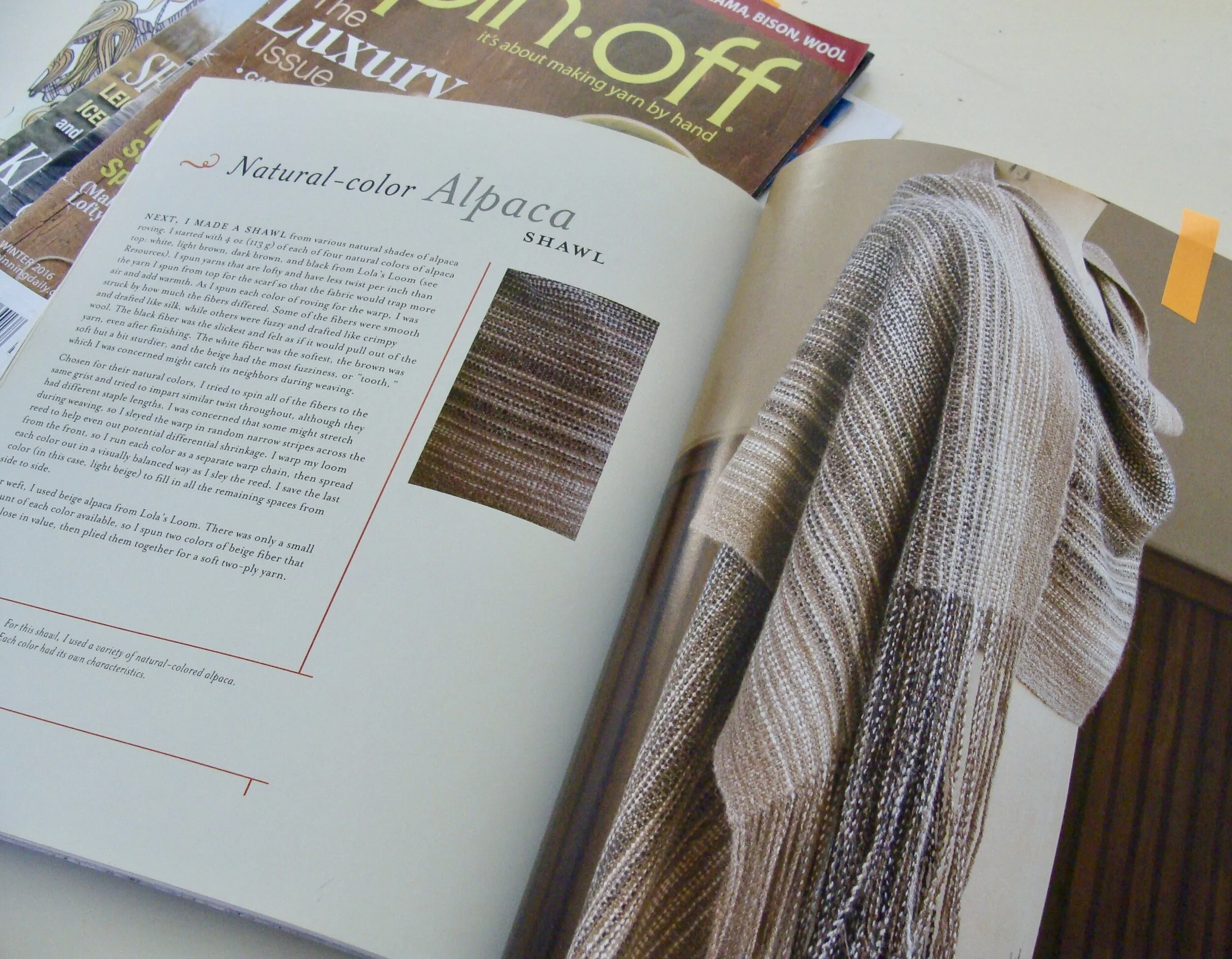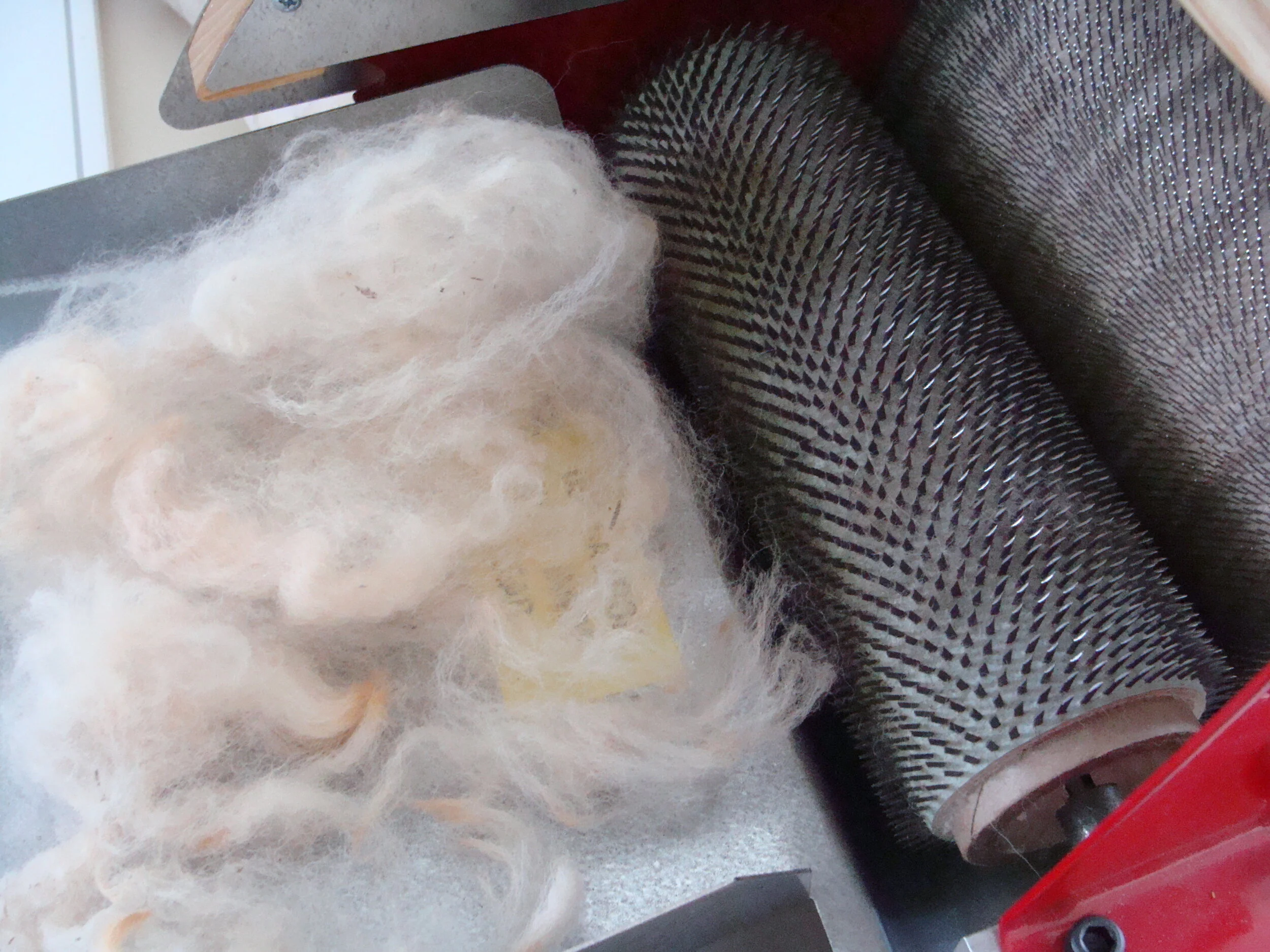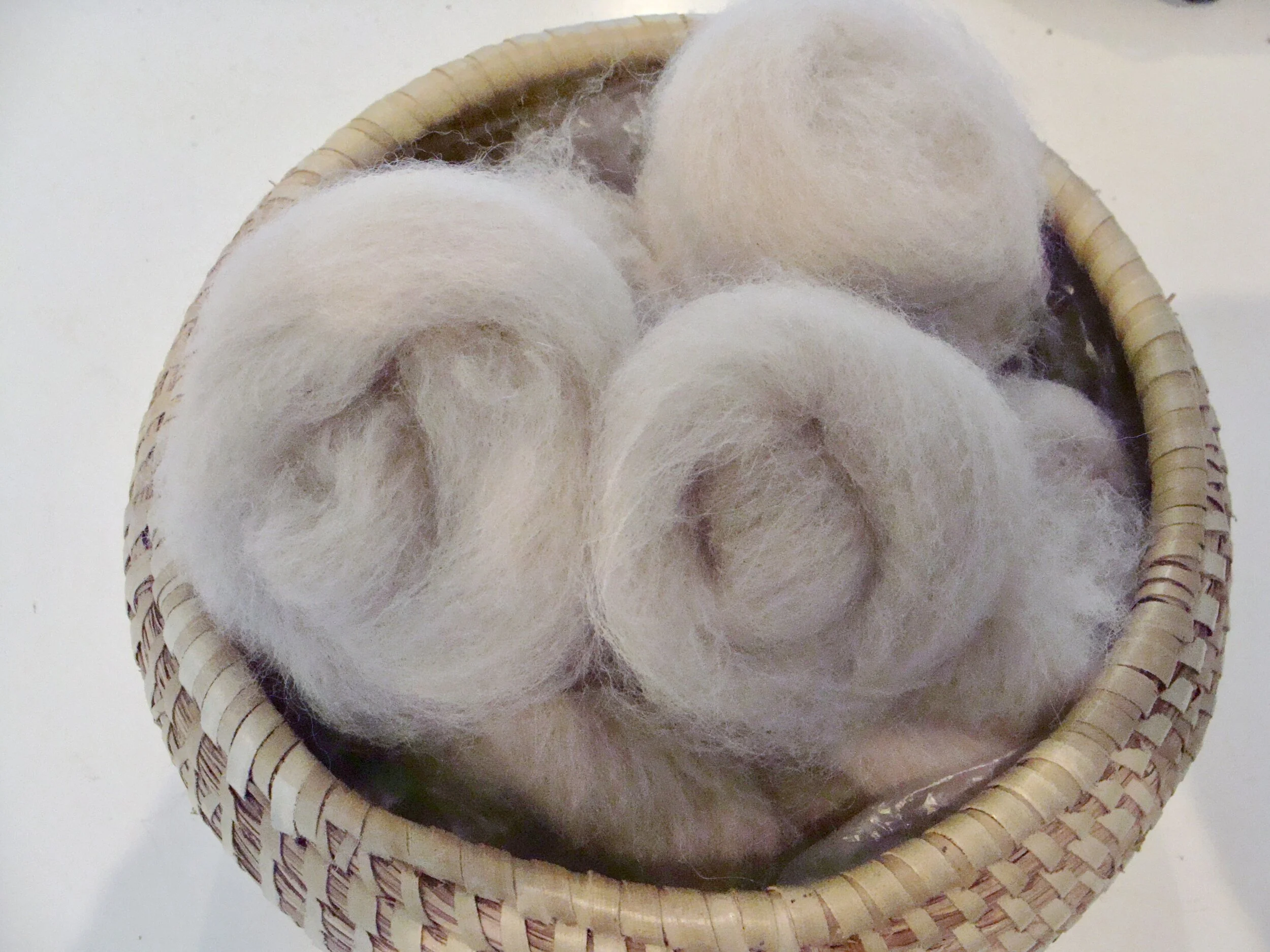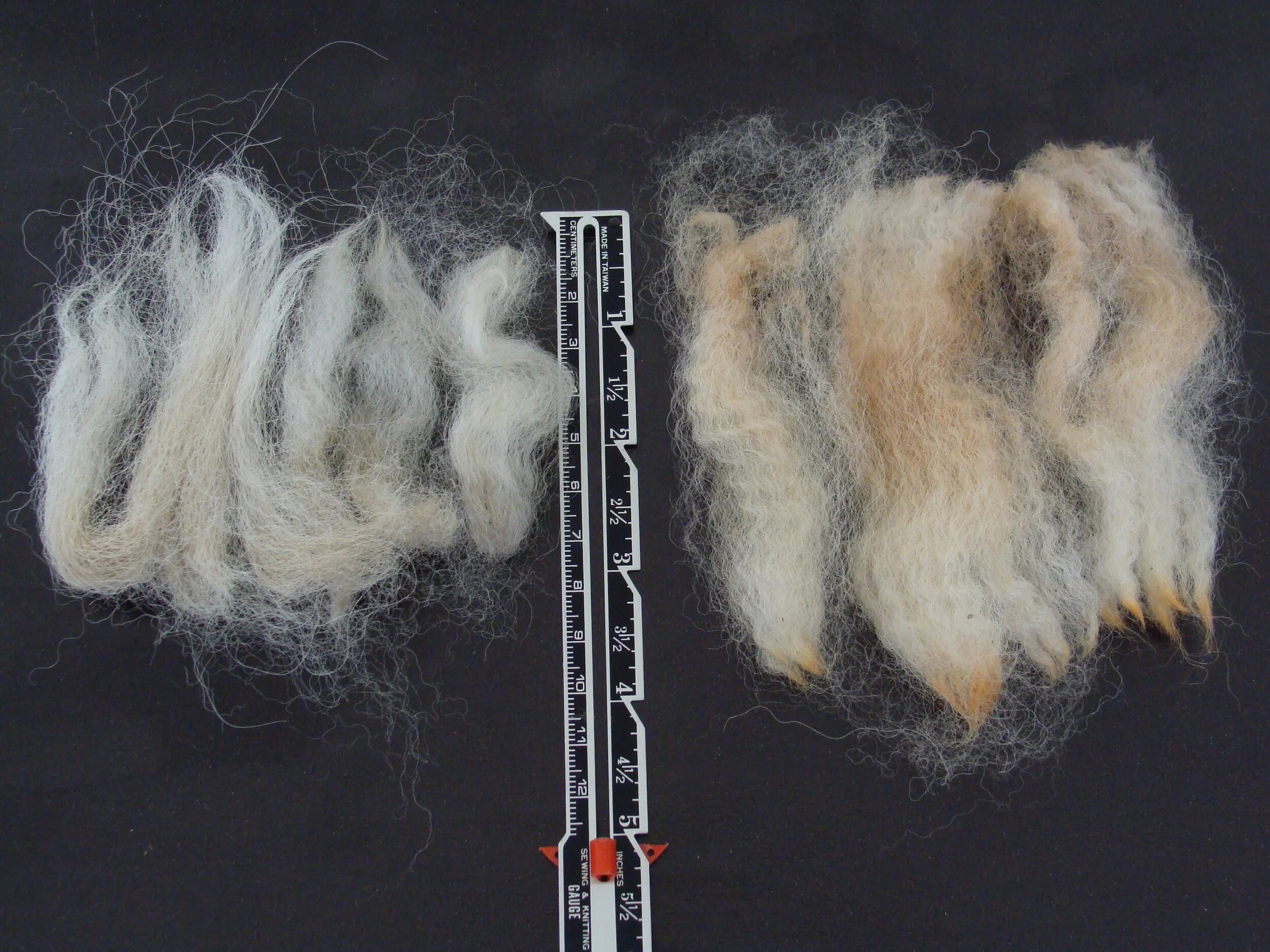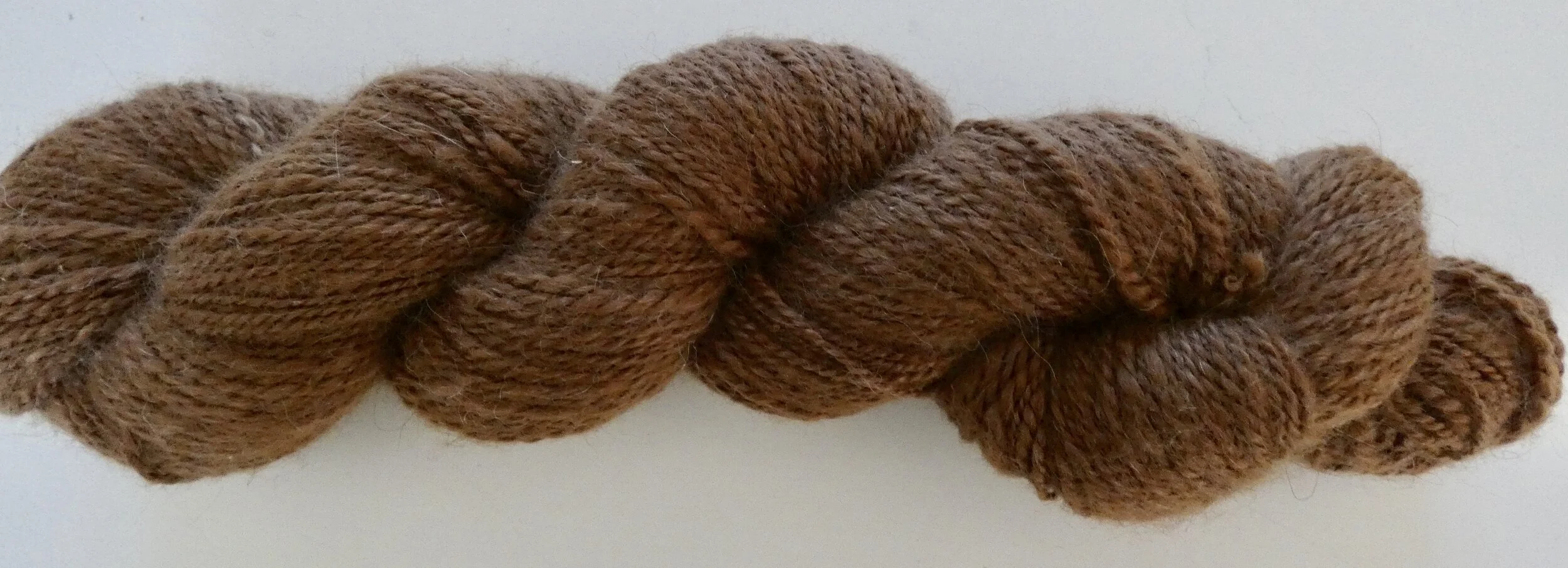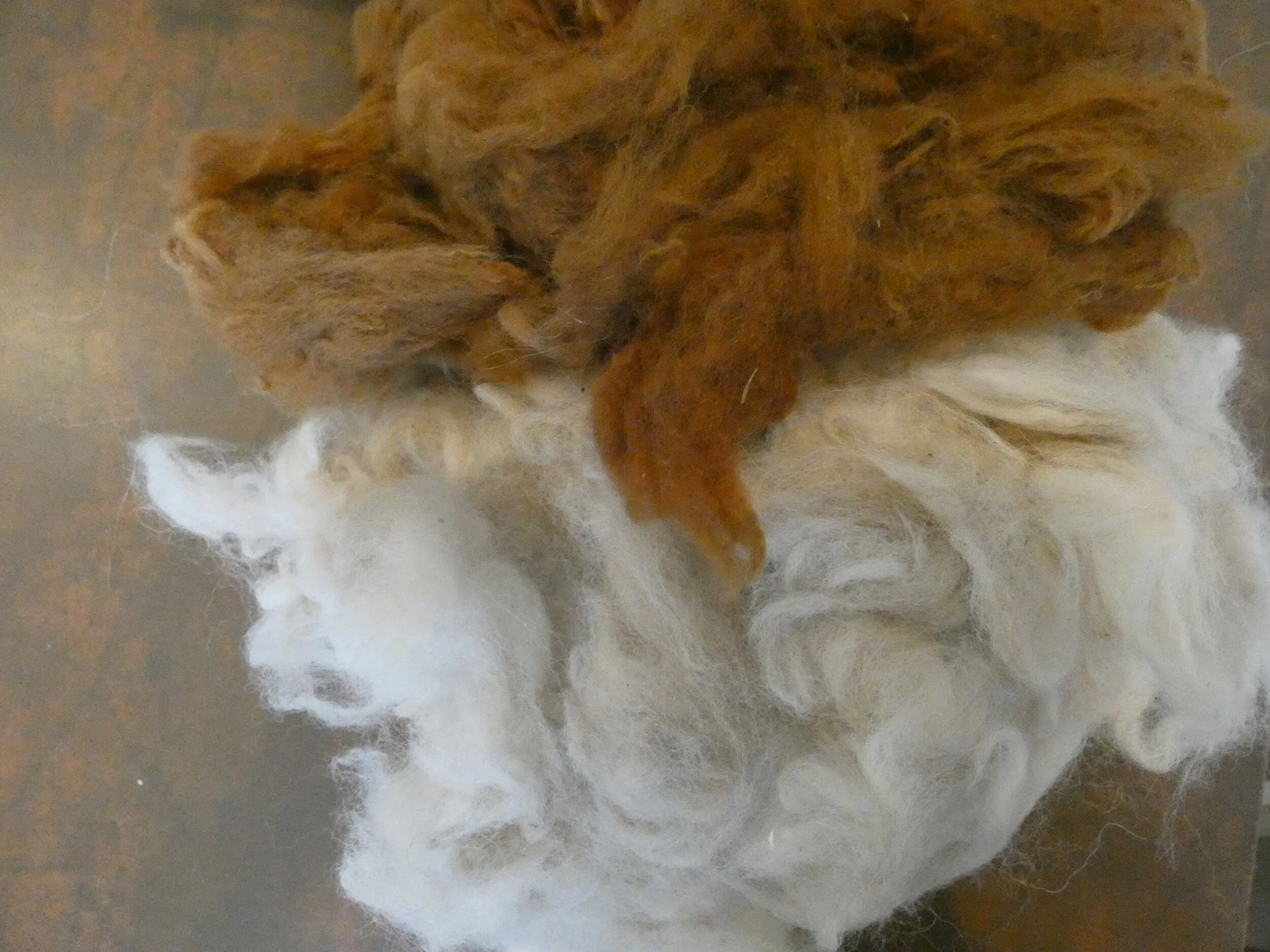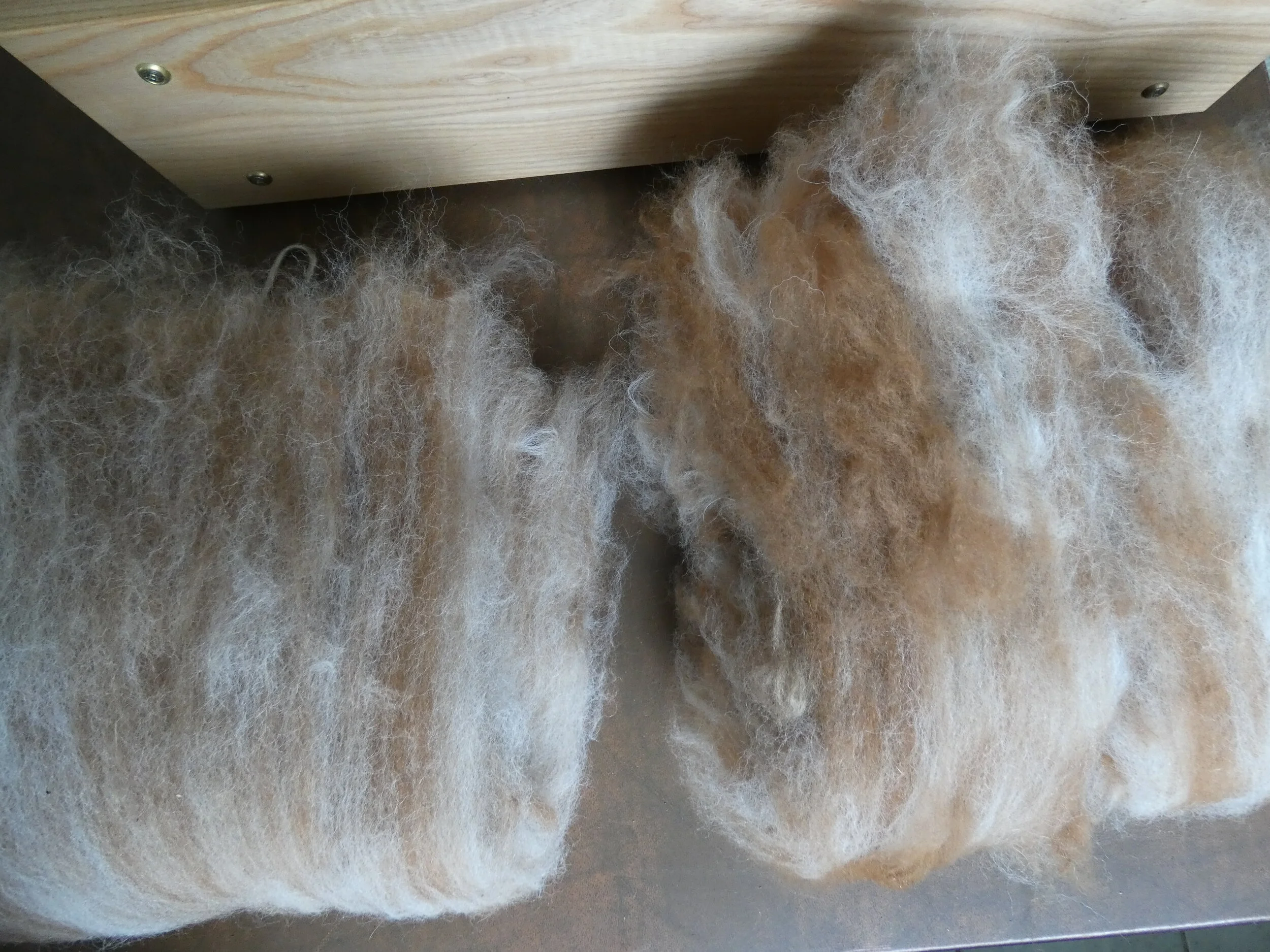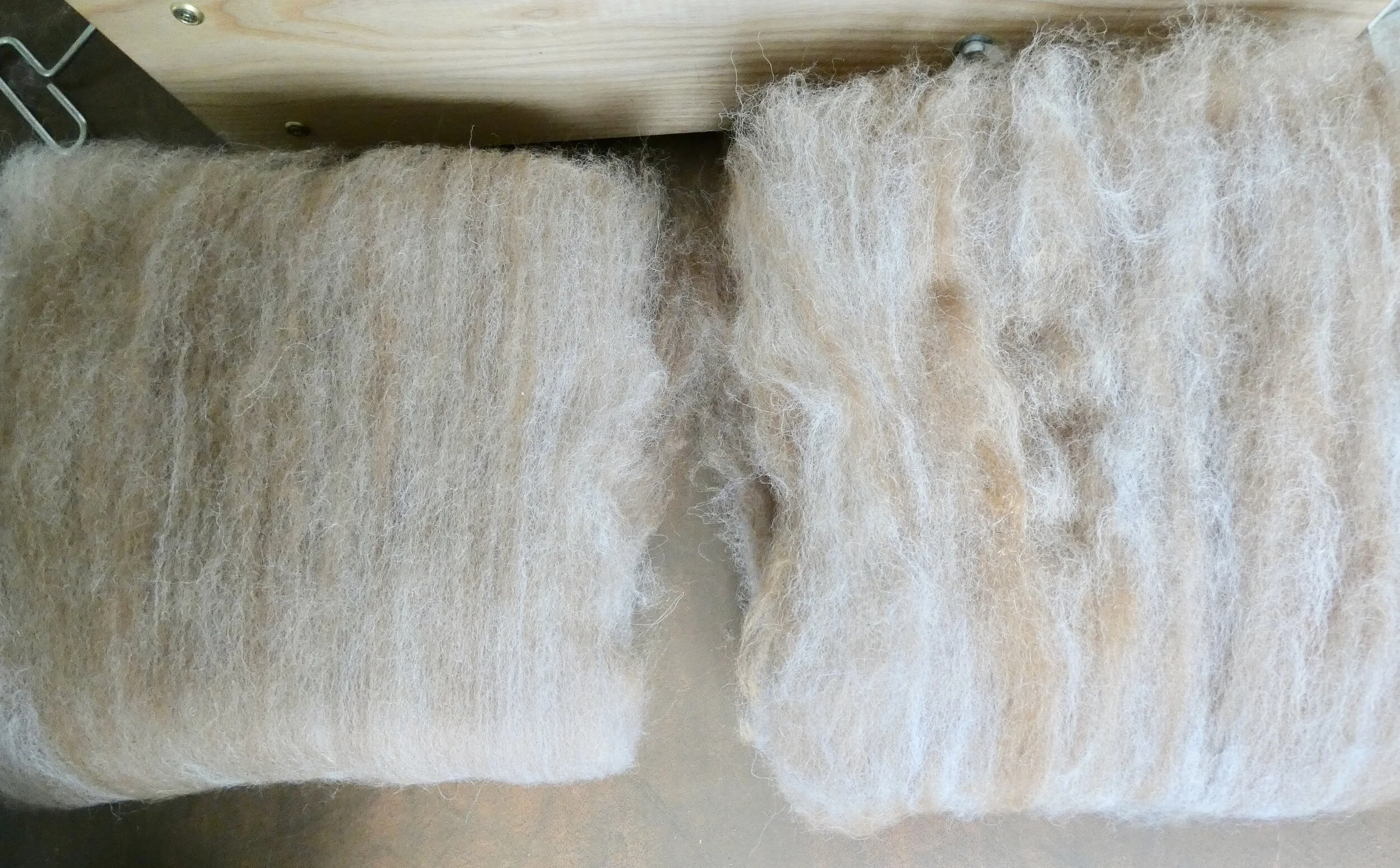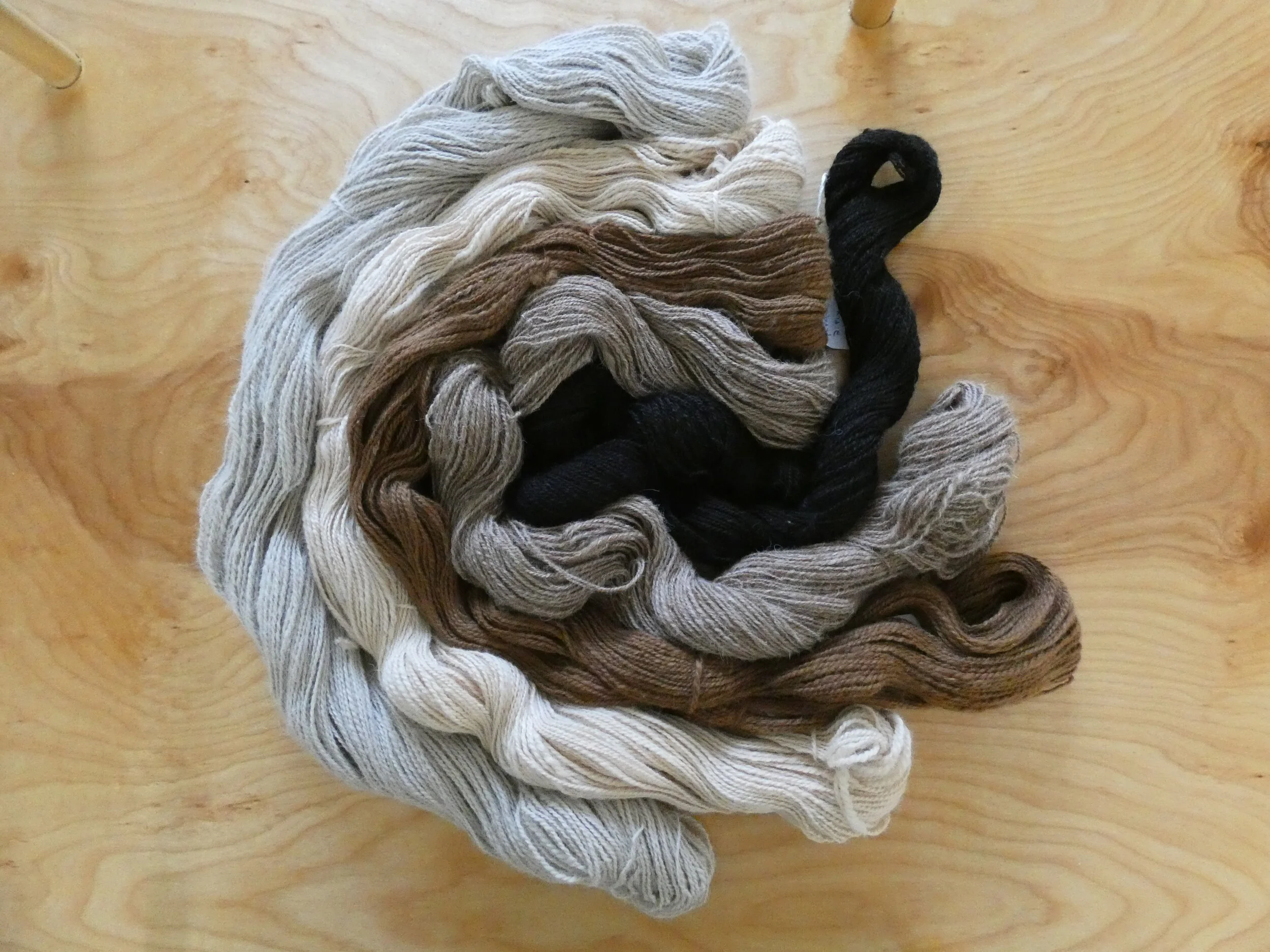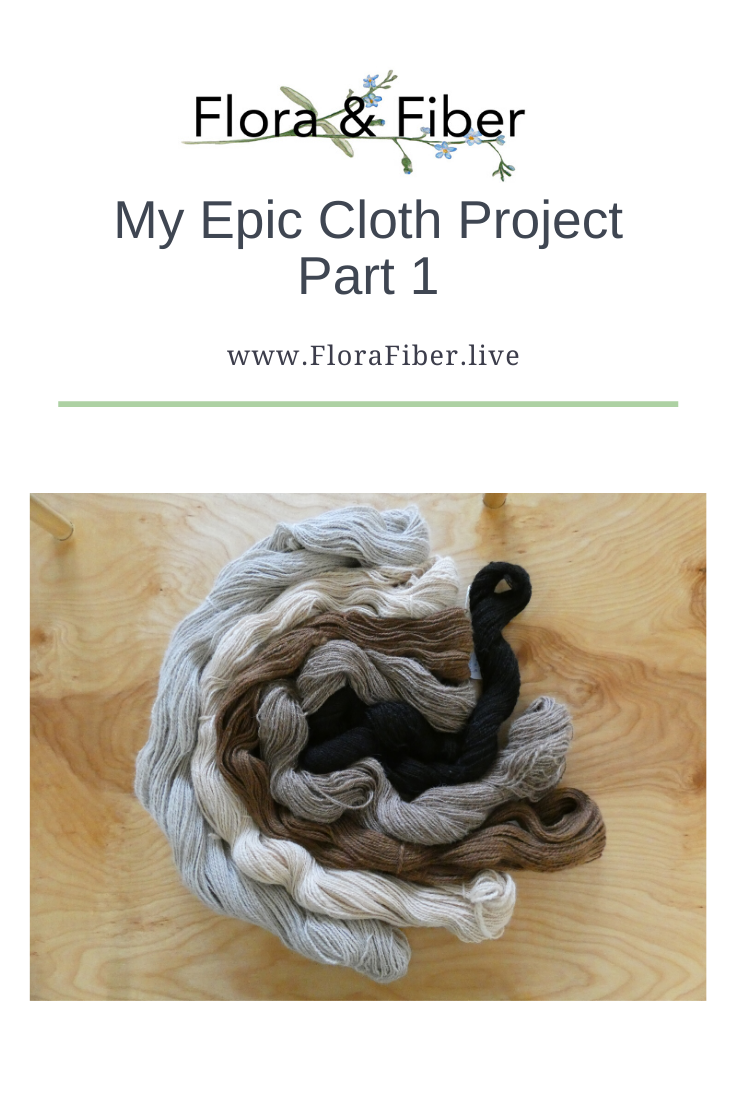My Epic Cloth Project-Part 1
Felicia Lo of the School of Sweet Georgia is the creator of The Epic Cloth Challenge. Felicia was Inspired by the Slow Cloth trend where one preps and/or dyes the fiber, spins the yarn, knits or weaves the fabric and ultimately reaches the finish line of a completed item. Felicia allotted a 9 month timeline for her project and challenged others to join her with their own designs. In typical Felicia Lo style, she provided a wonderful workbook chock full of ideas and milestones to help participants in our quest of making an Epic Cloth.
As an aside, I am a HUGE Felicia Lo fan. If you have never experienced any of her work check out:
School of Sweet Georgia to learn about color and fiber arts
Sweet Georgia YouTube Channel vlogs and great tutorials
Sweet Georgia Yarns hand-dyed yarns and so much more
Make & Hue a free quarterly online magazine on fiber arts topics
The Sweet Georgia Show a podcast with makers, designers, and shop owners
So back to the Epic Cloth Challenge. What did I choose?
That was a fairly easy decision. For followers of the blog, you’ll recall that last year I did a series I called ‘Alpaca - The Mini Series’. Over the course of the year I posted about Alpaca Shearing, Dyeing Alpaca, Suri Alpacas, Blending Alpaca Fiber, as well as I knit two projects with alpaca handspun, a neck warmer and a cowl.
But there were a few planned projects that I had yet to accomplish. One was based on the Natural-color Alpaca shawl Sara Lamb presented in her book 'Spin to Weave'. This project involved starting with four different raw alpaca fleeces and then washing, prepping, blending, spinning and weaving an almost 3 yard shawl of 1800 or so yards of handspun . . . in other words an EPIC project! Perfect for the challenge!
My project stars a cast of four Alpacas in their natural colors.
Nellie (beige)
Eve (black)
Jose (brown)
Regalia (cream/white)
I’ve blogged in detail how I wash alpaca fleece in this post. But just to recap:
I place each fleece in separate zippered mesh laundry bags.
I wash the alpaca in my washing machine filling the tub about 1/2 full with hot water and about 1/4 cup of Dawn dish detergent. I soak (not agitate) for 20 minutes then drain and spin only (no rinse water).
I repeat the same wash process as above, this time with just a few squirts of Dawn. Again, spinning with no rinse water.
For the final rinses, I add just enough hot water to cover (no soap) and immediately spin out the water; repeating until the bottom of the washer has no residual dirt (typically two more times).
I dry the clean fiber outside on a panel of 1/2" hardware cloth. While drying, I gently fluff and turn the fiber, picking out any remaining large pieces of VM (vegetative matter), matted fiber, second cuts, and broken lock tips.
Using Sara Lamb’s notes from her Alpaca Shawl, I planned for a 4 yard warp with 300 warp ends. I estimated I’d need roughly 4 ounces of fiber for each of the four warp yarns and about three times as much of the beige for the weft.
To prepare the clean alpaca for spinning, I aligned the fibers by running them through a drum carder. I use a Strauch Finest Single Wide drum carder. Each batt is approximately 2 ounces and I pass it a total of 3 times through the drum carder.
After removing the batts from the drum carder, I stripped them lengthwise and wound the pieces into fluffy little fiber nests.
Ready to commence the spinning marathon!
(Above I’m spinning away as a demo at a Sheep Shearing Festival in April.)
Each of these alpacas spun a little differently - their staple lengths varied, their crimp varied, some were smooth and drafted like silk, others were fuzzy and drafted more like wool. The cream/white fiber was the softest. The brown was the dustiest, but also very soft. The beige was probably the most fuzzy and the black the slickest.
Each of the yarns are 2-ply semi-worsted; spun Z-twist for the single and plied S-twist. I tried to spin all of the fibers to the same wraps per inch (wpi) and with a moderate amount of twist. The yarns were nicely balanced after wet finishing.
Here are the details for each:
For the weft, I needed the most yardage. I chose the beige as it was the most neutral and I hoped that it would provide the best visualization of the multiple warp colors. Fortuitously, it also proved to be a good weft choice because being the fuzziest, it would have made a sticky warp yarn.
My original estimate required 16 ounces for the weft. I prepared 11.65 ounces of raw fiber and after drum carding and spinning I ended up with 10.3 ounces for 722 yards. Frankly, I was weary of spinning alpaca fiber at this point and decided to start weaving thinking that I could spin more along the way. This proved to be a great decision as I actually had a fair amount remaining at the end of the project! Win!!!!
This was probably the “thickest” of the yarns, measuring around 12-14 wraps per inch.
Spinning details:
The brown alpaca fleece was not particularly dirty, but very dusty! Mr. Jose clearly enjoyed rolling around in the pasture. All throughout the prep and spinning of his fiber I had little piles of dusty grit at my feet; but ohhhhh his fiber was so soft and the color a luscious cocoa brown! I started with 4.5 ounces and ended up with 4 ounces. I’m sure that all the waste was dust, not neps or second cuts. It yielded 280 yards at the same 17 wraps per inch.
Spinning details:
For the fourth warp color i wanted a lighter shade of brown, so I needed to do a little blending.
I gathered 2.2 ounces of Nellie and 2.2 ounces of Jose and and held a marriage on my drum carder.
This is the first pass (right) and second pass (left) through the drum carder.
This is the second pass (right) and the final blending pass (on left).
So what have I’ve learned thus far in this Epic Cloth Project?
Refined my method to wash and dry alpaca fleeces
Recognize characteristics of fleeces from different alpacas and adjusted my spinning technique accordingly
I enjoy carding (particularly on a drum carder) a lot more than combing
Calculate the amount of fiber needed for a large project
Improved consistency when spinning for a specific yarn size, texture, and end use
Alpaca fleece is dusty, even if it’s not particularly dirty!
Coming Next time in Part 2 - Weaving and the Reveal of the Finished Project.
Edited to Add - Part 2 is now available here.





